Abstract
Plasmodium falciparum has recently reappeared in the central highland plateaux of Madagascar. To define its role in the overall malaria pathology occurring during the rainy season, we conducted a clinical and parasitological study among the 2776 consultants of a malaria field health centre which we established in the middle of the transmission area. From January to June 1988 the overall parasite rate was 63.2% and did not vary with age; the overall splenic rate was 46.9%, decreasing in individuals over 15 years of age. After the beginning of the main transmission season, an increase in parasite rates and parasite densities was observed, while febrile illnesses associated with malaria parasitaemia decreased. During the second part of the rainy season the parasite densities started to decrease, while parasite rates and malaria-associated fevers remained at the same level. The frequency of fevers was not related to the malaria parasite density owing to individual and seasonal variations.
Full text
PDF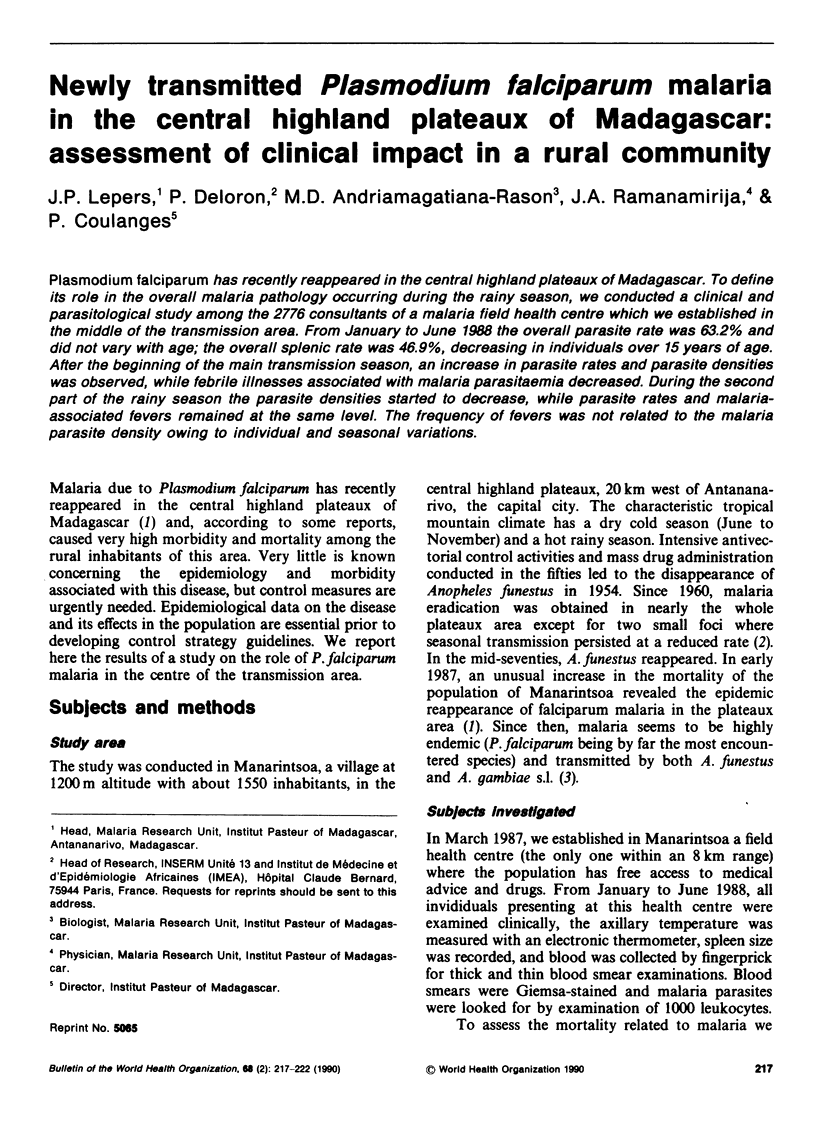
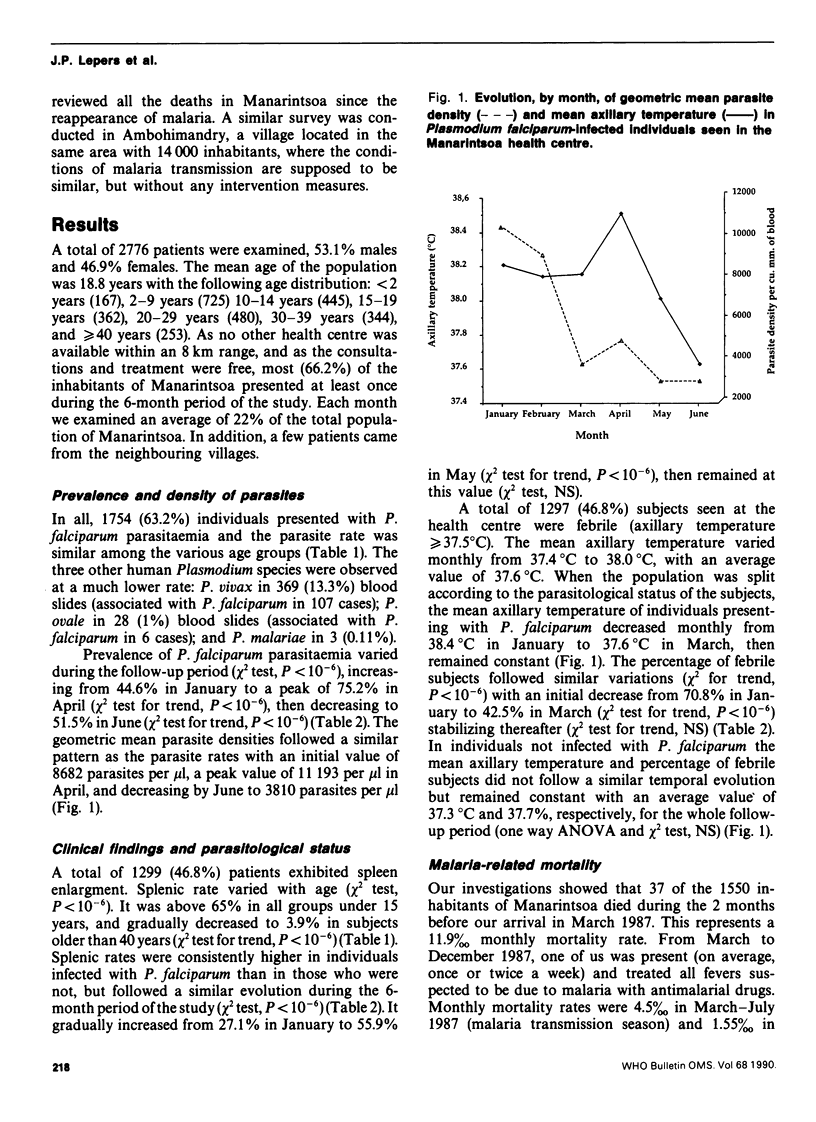
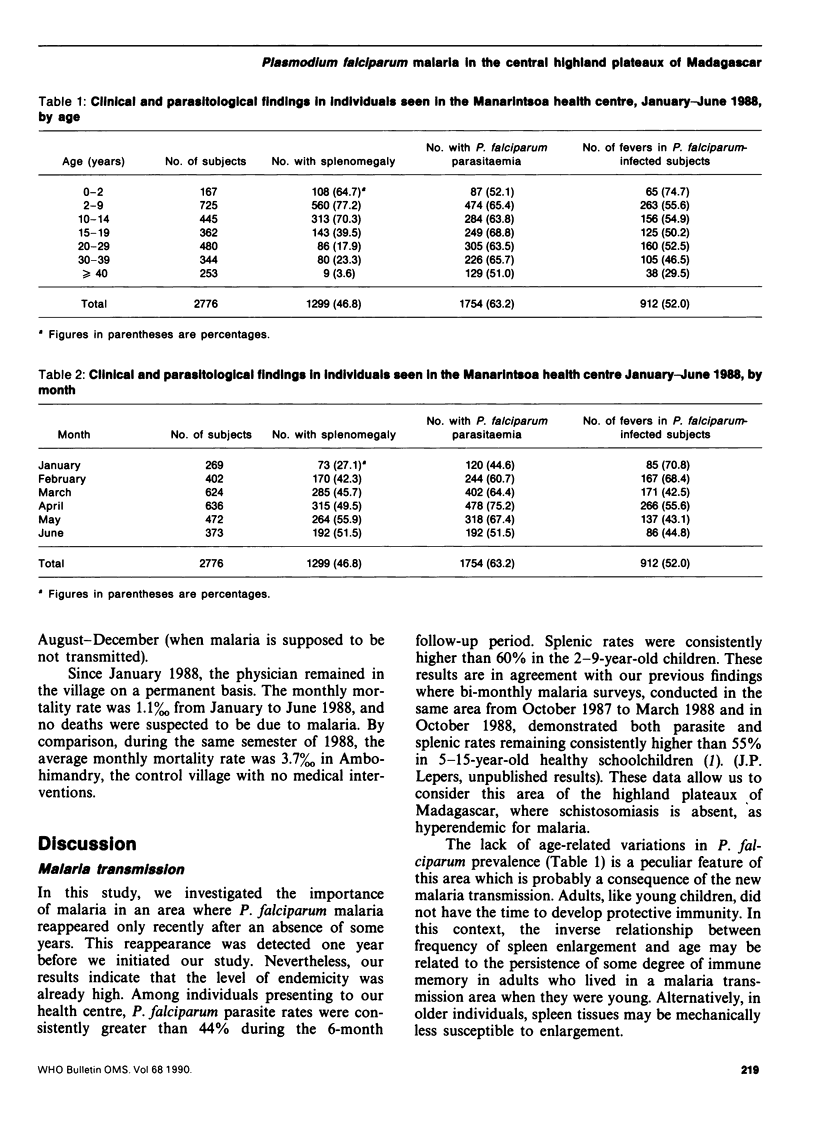
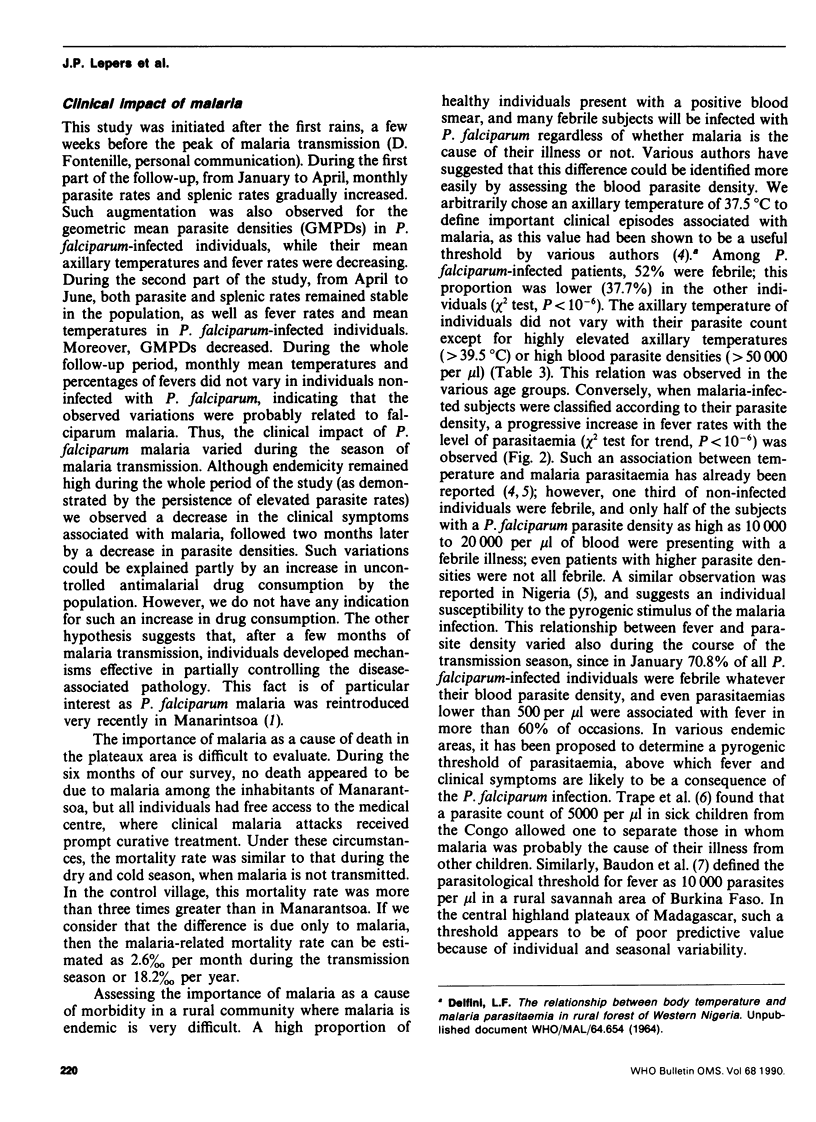
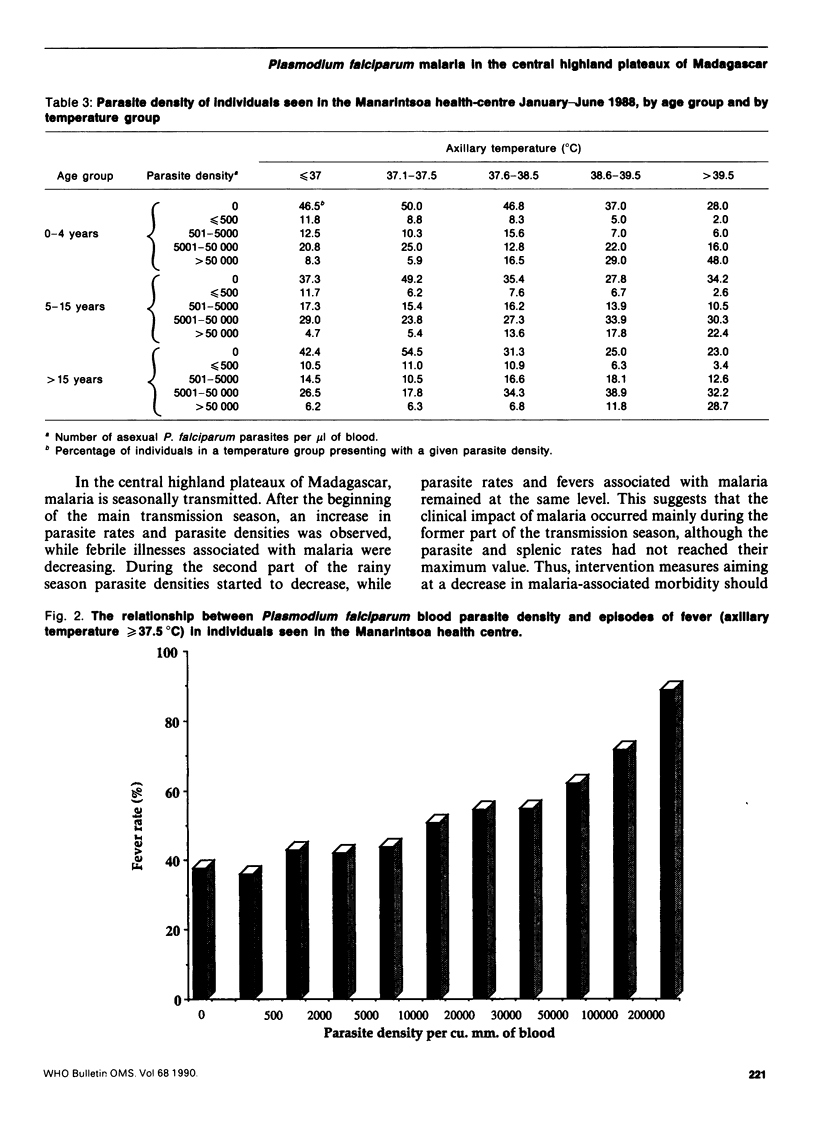
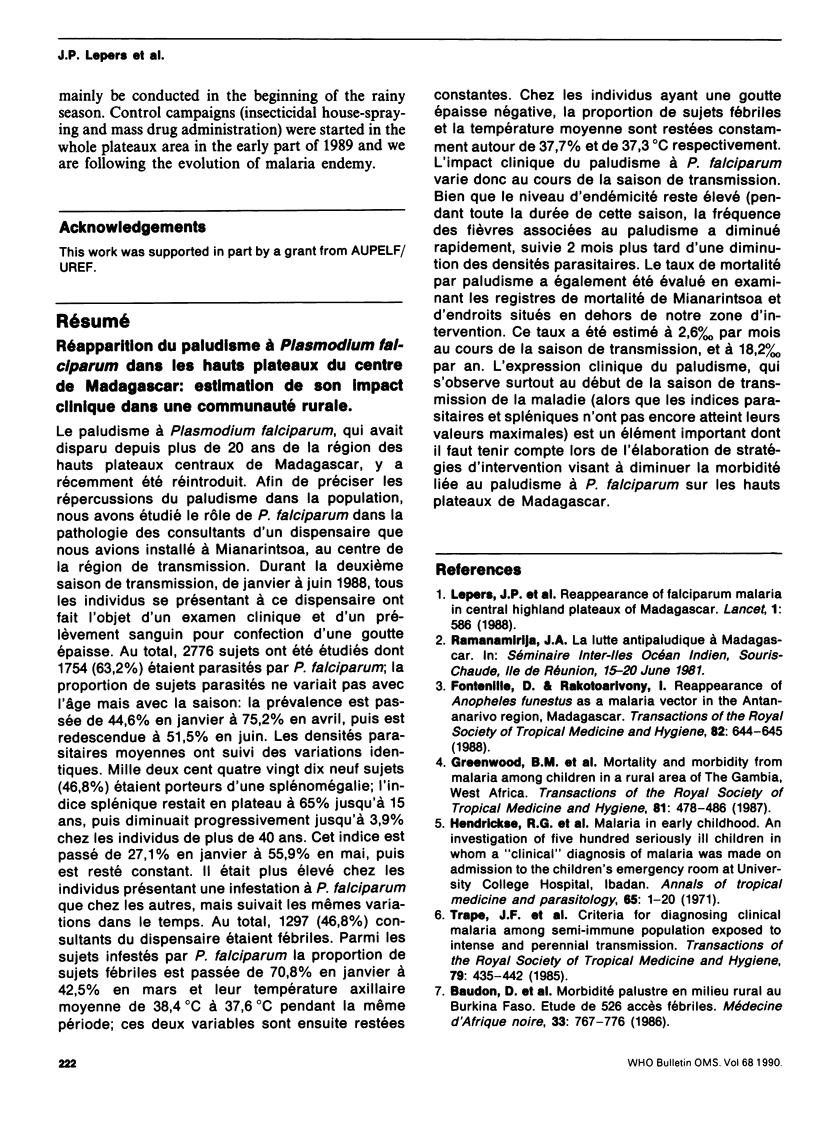
Selected References
These references are in PubMed. This may not be the complete list of references from this article.
- Fontenille D., Rakotoarivony I. Reappearance of Anopheles funestus as a malaria vector in the Antananarivo region, Madagascar. Trans R Soc Trop Med Hyg. 1988;82(4):644–645. doi: 10.1016/0035-9203(88)90545-7. [DOI] [PubMed] [Google Scholar]
- Hendrickse R. G., Hasan A. H., Olumide L. O., Akinkunmi A. Malaria in early childhood. An investigation of five hundred seriously ill children in whom a "clinical" diagnosis of malaria was made on admission to the children's emergency room at University College Hospital, Ibadan. Ann Trop Med Parasitol. 1971 Mar;65(1):1–20. [PubMed] [Google Scholar]
- Lepers J. P., Deloron P., Fontenille D., Coulanges P. Reappearance of falciparum malaria in central highland plateaux of Madagascar. Lancet. 1988 Mar 12;1(8585):586–586. doi: 10.1016/s0140-6736(88)91375-x. [DOI] [PubMed] [Google Scholar]
- Trape J. F., Peelman P., Morault-Peelman B. Criteria for diagnosing clinical malaria among a semi-immune population exposed to intense and perennial transmission. Trans R Soc Trop Med Hyg. 1985;79(4):435–442. doi: 10.1016/0035-9203(85)90054-9. [DOI] [PubMed] [Google Scholar]


